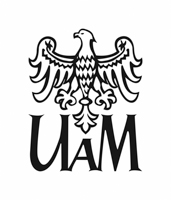Q&A
Frequently asked questions.
Customer account and payment
e-mail to amuseq@amu.edu.pl.
All forms are available here.
- Oczekujące (= pending),
- Przyjęte (= accepted),
- Realizowane (= processing) – the order cannot be canceled when it has got this status,
- Wykonane (= processed),
- Anulowane (= canceled).
NGS and TapeStation
Sequencing and capillary electrophoresis
For each sample, ALL cells in the form row should be completed (except for the Notes column, which is optional). Incomplete data may delay the order or even prevent the order from being processed.
Please make sure to save the file before sending it!
Please pay special attention to the information contained in the headings of individual columns (red triangle in the upper right corner of the cell).
or name of the downloaded form as this will
prevent you from placing an order.
In case the template DNA and primer are provided separately, select the form: In case the template DNA and primer are already mixed, select the form:
- ReadyToSeqTube (tubes),
- ReadyToSeqPlate (plates).
- ReadyToLoadTube (tubes),
- ReadyToLoadPlate (plates).
- FragmentAnalysisTube (tubes),
- FragmentAnalysisPlate (plates).
The name of the result must be UNIQUE within one order!
The name may contain the following characters:
- letters [a-z A-Z (without Polish characters)]
- numbers [0-9]
- underscore, dash and period [_ -. ]
- SNaPshot products labeled with dR6G, dRROX, dRTAMRA: filter E5 (DS-02) – LIZ120 standard,
- fragments labeled 6FAM, LIZ, NED, PET, VIC: filter G5 (DS-33) – LIZ120, LIZ600 or LIZ1200 standards,
- fragments labeled 6FAM, JOE, NED, ROX): filter F (DS-32) – ROX500 standard.
The names on the TUBES must be identical to those entered on the form under “Template name/Nazwa matrycy” and “Primer name/Nazwa startera”, respectively.
STRIPS must be signed on the sides and on the lids with consecutive numbers (at least the first and last tube in each strip must be signed).
PLATE should be signed with the order number.
- 4.5 µl of 10 µM primer,
- the right amount of template depending on the type of DNA:
- 450 ng of plasmid DNA,
- 9 ng DNA/for every 100 bp of purified PCR product up to 500 bp in length,
- 15 ng DNA/for every 100 bp of purified PCR product over 500 bp in length,
- make up to 15 µl with water.
0.2 ml TUBES should be signed with consecutive numbers, the PLATE – with the order number, and on the STRIPS, signatures must be placed on the sides and lids of at least the first and the last tube.
5 µl will be taken for the reaction. However, we please to prepare a larger volume in case of possible repetitions.
- Plasmid – we accept purified plasmid DNA in a concentration of 90 – 130 ng/µl (minimum volume is 3 µl per one reaction). If the concentration of your sample is lower, order the sequencing using the form: ProblemSeq.
- PCR product – we accept PCR products with the photo of the gel attached as Dodatkowe informacje (minimum volume is 3 µl per one reaction).
- If you want to read a sequence above 700 bp please send the form: ProblemSeq.
| M13F-47 | CGCCAGGGTTTTCCCAGTCACGAC |
|---|---|
| M13R | TCACACAGGAAACAGCTATGAC |
| M13F-21 | TGTAAAACGACGGCCAGT |
| M13R-21 | CAGGAAACAGCTATGACC |
| T3 promoter | ATTAACCCTCACTAAAGGGA |
| T7 universal primer | TAATACGACTCACTATAGGG |
| T7 Terminator | GCTAGTTATTGCTCAGCGG |
| SP6 | TATTTAGGTGACACTATAG |
| ITS1_fun | TCCGTAGGTGAACCTGCGG |
| ITS4_fun | TCCTCCGCTTATTGATATGC |
| ITS5 | GGAAGTAAAAGTCGTAACAAGG |
| EGFP-C | CATGGTCCTGCTGGAGTTCG |
| EGFP-N | CGTCGCCGTCCAGCTCGACCAG |
| pEGFP_CR | CAGGGGGAGGTGTGGGAGGTT |
| umes_F | GGAAGTAAAAGTCGTAACAA |
| umes_R | TCCTCCGCTTATTGATATGC |
| piNDBAC5 | GGATGTGCTGCAAGGCGATTAAGTTGG |
| piNDBAC3 | CTCGTATGTTGTGTGGAATTGTGAGC |
| WPRE_R | CATAGCGTAAAAGGACAACA |
| EF-1a_F | TCAAGCCTCAGACAGTGGTTC |
| DN_new79_R | ACACCCCGAGATTCTGAAACAAACTGGACACACCTC |
| DN_new117_F | CGTGGATAGCGGTTTGACTCACGGGGATTTCCAAG |
| LucN_R | CCTTATGCAGTTGCTCTCC |
The photo of the gel must contain information of the order of samples and the volume applied, and a description of the DNA length standard.
- The samples should be delivered to the laboratory packed in a string bag with an attached sheet with order number and contact info of ordering person.
- You can deliver DNA in 0.2 µl or 1.5 ml tubes, in strips or on the plate.
- The names on the tubes must be identical to those entered in the form under “Template name/Nazwa matrycy” and “Primer name/Nazwa startera”. The name of the plate must be identical to the order number.
- Any inaccuracies will require additional contact with the ordering person and may extend the order fulfillment time.
- Put the tubes or the sealed plate into the zip-bag. Tubes should not be secured with parafilm.
- Add sheet with contact info of ordering person.
- Pack the sample bag in a bubble envelope and ship it to our address.
- It is not necessary to add coolers.
Sequencing is nonstandard or problematic, if template concentration is lower than required, the sequence is GC rich, there are secondary structures in the sequence, or the expected read length is longer than 700 bp.
- Sequence Scanner (Thermo Fisher Scientific, Download),
- Finch TV (Digital World Biology, Download),
- Chromas Lite (Technelysium, Download).

